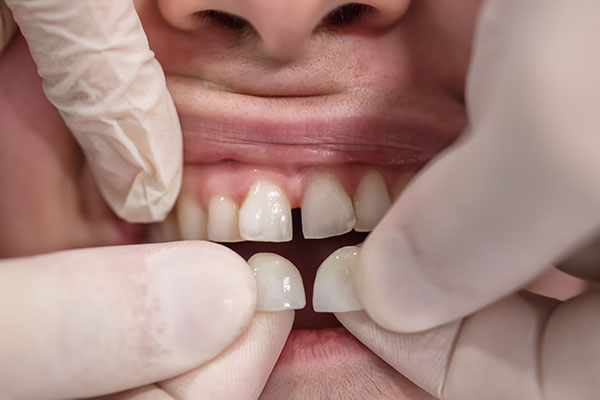 Veneers are an excellent option for individuals seeking a permanent treatment that makes their teeth more attractive. A smile is often one of the first features noticed about a person; unfortunately, many dental issues can dim that happy look. Teeth may become stained from eating and drinking various types of food and drink over time. They can also become cracked or chipped while playing sports or participating in activities. Thus, many people are looking for a way to enhance their smiles.
Veneers are an excellent option for individuals seeking a permanent treatment that makes their teeth more attractive. A smile is often one of the first features noticed about a person; unfortunately, many dental issues can dim that happy look. Teeth may become stained from eating and drinking various types of food and drink over time. They can also become cracked or chipped while playing sports or participating in activities. Thus, many people are looking for a way to enhance their smiles.
Definition and process
Dental veneers are a type of shell or covering placed over the front of existing teeth. These custom-made coverings are composed of a thin material colored to match the teeth. The shells are crafted from a mold provided by a dental professional, and a technician creates them in a dental lab. The shells are often compared to fingernails because of the custom fit to each tooth, and most are made out of porcelain or composite resin.
The process generally begins with a consultation. A dentist discusses goals and creates a plan. Next, a small portion of the enamel of each tooth is removed by grinding it down. Impressions are made of the teeth and sent to the lab, which usually completes the veneers in a couple of weeks. Finally, each veneer is bonded to the tooth with resin.
Pros and cons
Individuals should understand the advantages and disadvantages of this cosmetic procedure and consult a dentist to find out if this type of treatment is a good solution. Since this common dental treatment is permanent, patients should gather copious information beforehand.
Pros
Many people whiten their teeth at home, but this approach is only temporary. One of the most common reasons for veneers is to maintain permanently white teeth. Since they are stain-resistant, these coverings eliminate the need to repeatedly whiten the teeth.
Another benefit is fixing cosmetic problems, such as cracked or chipped teeth. For instance, a soccer player may receive a blow to the face that damages a tooth. A veneer corrects many cosmetic issues that result from injury.
Finally, enamel can deteriorate over time due to hard tooth brushing or diseases such as acid reflux. People who have enamel abrasion or erosion on a tooth are good candidates for a veneer.
Cons
For some individuals, the cost of this dental treatment may be an issue. Some insurance companies consider it a cosmetic procedure and may not cover it. Patients should therefore always check with their insurance provider.
Increased tooth sensitivity to hot or cold may occur after initial treatment. Fortunately, this usually decreases within a few days.
Some people may consider the irreversibility of the process undesirable. Because the enamel of a tooth is altered to accommodate a veneer, the procedure cannot be reversed.
Conclusion
People considering veneers should review the pros and cons and consult a dental professional to discuss desired outcomes and plans. A veneer is an excellent option for individuals who want to hide a tooth that has become chipped, cracked, or discolored.
Request an appointment or call North Coast Dental Implants & Cosmetics at 760-705-3407 for an appointment in our San Marcos office.
Related Posts
Veneers can improve a patient’s smile in many ways by covering up imperfections in teeth with natural-colored shells. Staining on front teeth is one of the most popular reasons patients choose this type of restoration. People who have lived with discolored teeth can feel uncomfortable smiling in public, and other treatment options may not be…
Dental veneers are made of porcelain or composite resin material. The shells cover the front surface of a patient's front teeth and can be used to change the size, shape, or color of teeth. These restorations have been used for years to transform smiles, but some may wonder about their permanency. There are several reasons…
There are numerous cosmetic procedures to improve someone’s smile, and veneers are a popular option. There are two types of veneers: Porcelain and composite. Both are used for minor cosmetic issues such as discolored teeth, cracks or chips, gaps between teeth, and worn-down enamel.Porcelain is used more often as there are numerous benefits, but this…
